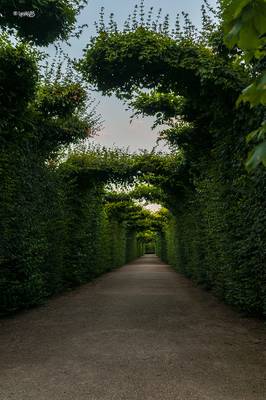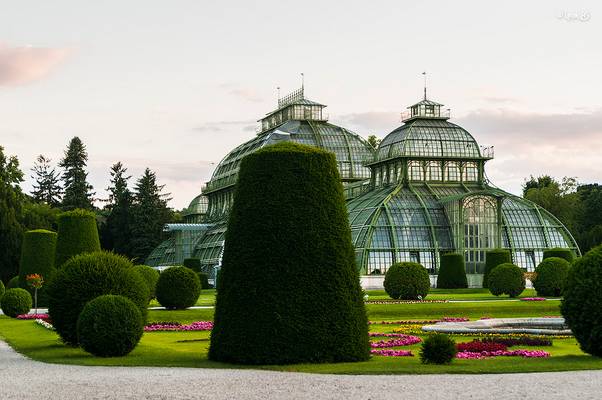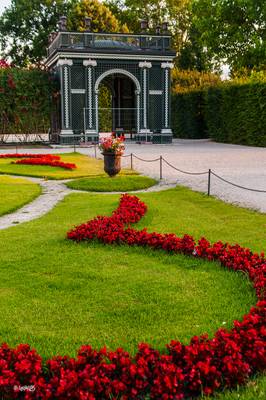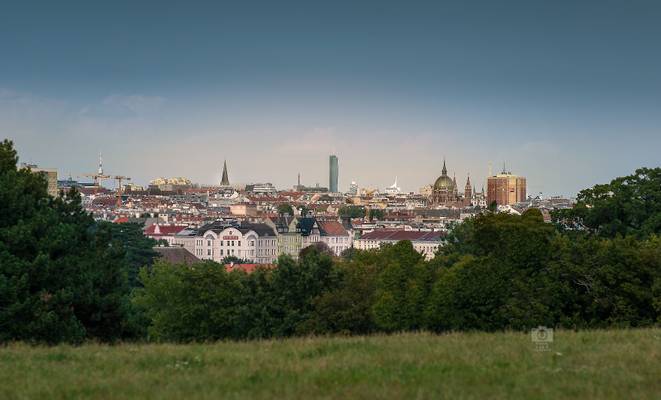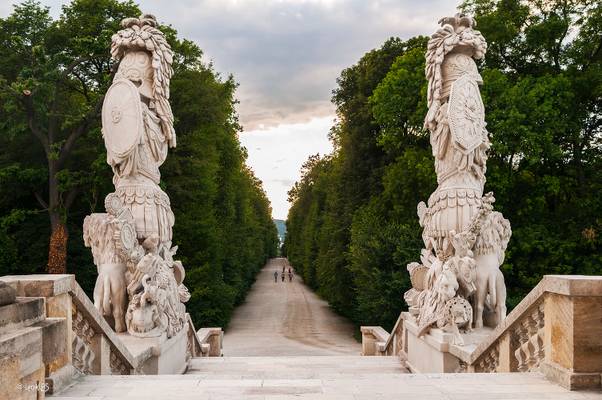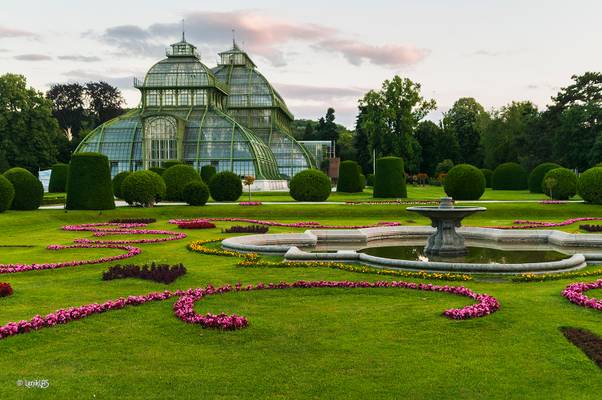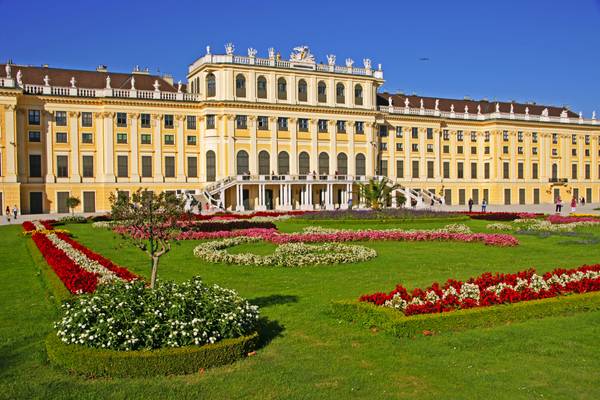
Hietzing

by Andrey Sulitskiy
SONY DSC

by jim stephenw
Schönbrunn Palace was the main summer residence of the Habsburg rulers, located in Hietzing, Vienna. The 1,441-room Baroque palace is one of the most important architectural, cultural, and historic monuments in the country. Since the mid-1950s it has been a major tourist attraction. The history of the palace and its vast gardens spans over 300 years, reflecting the changing tastes, interests, and aspirations of successive Habsburg monarchs. In 1569, Holy Roman Emperor Maximilian II purchased a large floodplain of the Wien river beneath a hill, situated between Meidling and Hietzing, where a former owner, in 1548, had erected a mansion called Katterburg. The emperor ordered the area to be fenced and put game there such as pheasants, ducks, deer and boar, in order for it to serve as the court's recreational hunting ground. In a small separate part of the area, "exotic" birds such as turkeys and peafowl were kept. Fishponds were also built. During the next century, the area was used as a hunting and recreation ground. Eleonora Gonzaga, who loved hunting, spent much time there and was bequeathed the area as her widow's residence after the death of her husband, Ferdinand II. From 1638 to 1643, she added a palace to the Katterburg mansion. The Schönbrunn Palace in its present form was built and remodelled during the 1740–50s during the reign of empress Maria Theresa who received the estate as a wedding gift. Franz I commissioned the redecoration of the palace exterior in the neoclassical style as it appears today. Franz Joseph, the longest-reigning emperor of Austria, was born at Schönbrunn and spent a great deal of his life there. He died there, at the age of 86, on 21 November 1916. Following the downfall of the Habsburg monarchy in November 1918, the palace became the property of the newly founded Austrian Republic and was preserved as a museum. The name Schönbrunn (meaning "beautiful spring") has its roots in an artesian well from which water was consumed by the court. Information taken from wikipedia
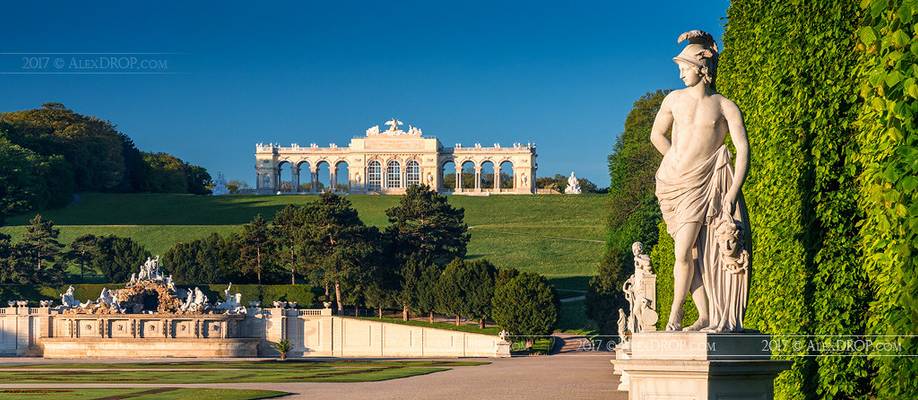
Gloriette and statue of Perseus with the Gorgon Medusa's head early in the morning in Schönbrunn Palace Garden. A gloriette (from the 12th century...
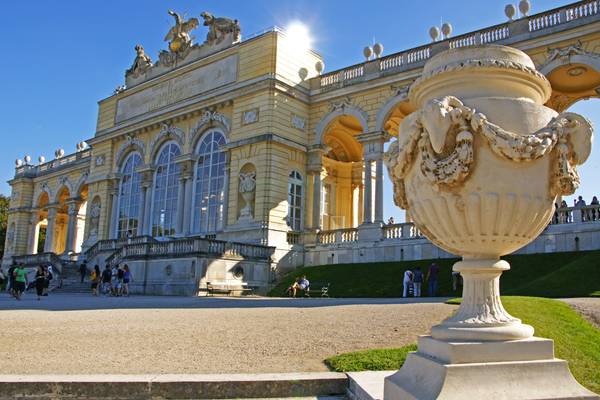
by Andrey Sulitskiy
SONY DSC
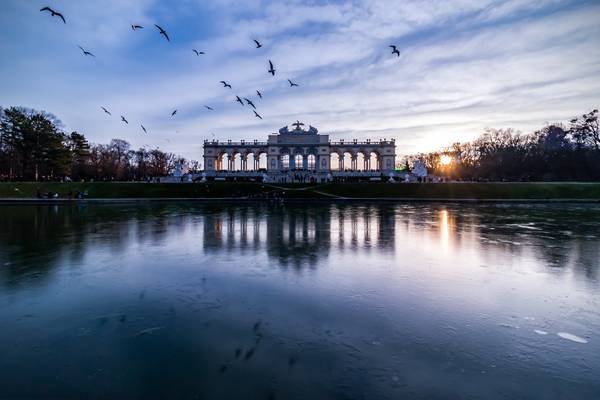
by Salvatore Petrantoni
Il palazzo di Schönbrunn e il suo parco sono elementi inscindibili l'uno dall'altro. Il parco, ampio e variegato, si presenta in stile barocco alla francese e venne progettato da Jean-Nicolas Jadot e Adrian von Steckhoven sotto la direzione dell'imperatrice Maria Teresa. Un primo progetto del parco venne stilato da Fischer von Erlach, ma questo decadde entro breve in quanto il progetto non si accomodava alla grande area da riempire e alle molteplici possibilità artistiche che si presentavano.
Il progetto venne attuato dal 1695 su progetto di Jean-Nicolas Jadot (già allievo di Le Notre, giardiniere del Re di Francia a Versailles), e venne costruito in anticipo sulla struttura stessa del palazzo per dar tempo alle piante di crescere e il cantiere fu in attività sino al 1699. Tale progetto comprendeva probabilmente due soli parterre laterali al grande viale che ancora oggi attraversa il parco.
Con Maria Teresa, i cambiamenti al palazzo si riflessero anche sul giardino e già dal 1750, i due parterre laterali vennero allargati sino alle dimensioni attuali. La trasformazione del progetto venne anche fortemente voluta dall'imperatore Francesco Stefano il quale, tra il 1752 e il 1753, vi fece erigere tra gli altri uno zoo, oltre a un prezioso giardino botanico. Egli si servì dell'olandese Adrian van Steckhoven e del suo assistente Richard van der Schot per la costruzione del nuovo giardino. Nel 1755 venne terminata la costruzione dell'Orangerie.
Come si è già accennato, fu poi Maria Teresa a commissionare la costruzione della Gloriette in fondo al giardino, sette anni dopo la morte del marito e nel medesimo tempo venne anche costruita la grande fontana di Nettuno che ancora oggi troneggia in fondo al viale centrale del grande parco.
All'epoca neoclassica, sempre nel XVIII secolo, risalgono invece la fontana dell'Obelisco (1777) e la rovina (1778) di chiaro gusto d'epoca.
Fu l'imperatore Giuseppe II a disporre l'accesso al pubblico ai giardini imperiali, con grande dispiacere dell'aristocrazia che si trovava a dover passeggiare nei giardini con la popolazione comune, anche se il palazzo divenne un importante luogo di aggregazione per la popolazione viennese.
Dalla fine della monarchia anche il palazzo è amministrato dalle dipendenze dello stato.
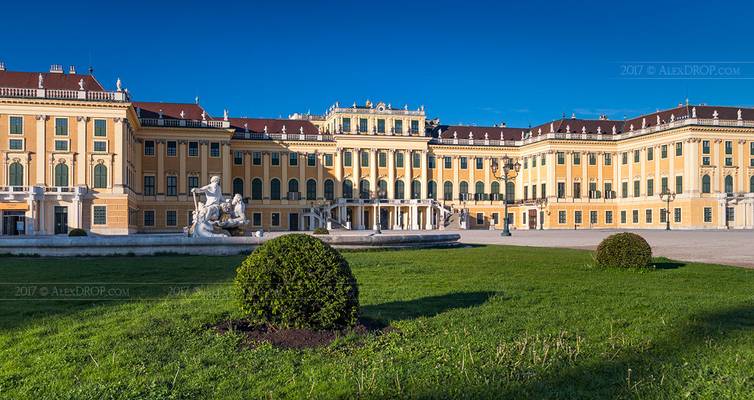
Schönbrunn Palace (German: Schloss Schönbrunn) is a former imperial summer residence located in Vienna, Austria. The 1,441-room Baroque palace is one...
Thanks to all Phoide contributors to Hietzing!
Most notably Lenis Las, Michele Naro and Andrey Sulitskiy.
